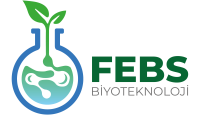Silk and Beauty Industry
Silk extracts consist of a total of 18 amino acids with two main protein groups.
Silk, which has the same structure as the amino acid composition in our hair and skin, is easily absorbed by the skin.
In skin care;
- Supports cell repair
- Promotes cell regeneration
- It reduces transdermal water loss and thus helps to maintain the moisture level of the skin.
- Promotes the necessary collagen synthesis for firmer skin.
Silk cocoons are very popular in Asian skin care culture for their beneficial properties.
It is known that when used as an exfoliant in face wash, it softens minor skin cracks and aging marks with its anti-aging effect, and has a repairing effect against UVB rays with its soft and less abrasive effect compared to other exfoliant products.
We hear of silk powder, silk peptides, silk protein and silk amino acids under different names in the industry.
What is the difference?
The difference lies in particle sizes, which affect solubility in water. With its solubility, it affects the penetrating power of the skin layers and cuticles of the hair.
Silk proteins, which can penetrate deep into the skin, are more valuable for their therapeutic qualities.
T-Silk COLLAGEN© is a bioactive compound effective in penetrating the layers of the skin with its premium quality of hydrolyzed silk protein. It is produced with patented special technology.
T-Silk COLLAGEN© peptides give shine, suppleness and a smooth feel to our skin and hair. Even when dry, it forms a crystalline protective structure on the tissue surface.
When used in skin care products, it helps maintain moisture in the skin barrier. It is an indispensable bioactive raw material in premium skin care products.
